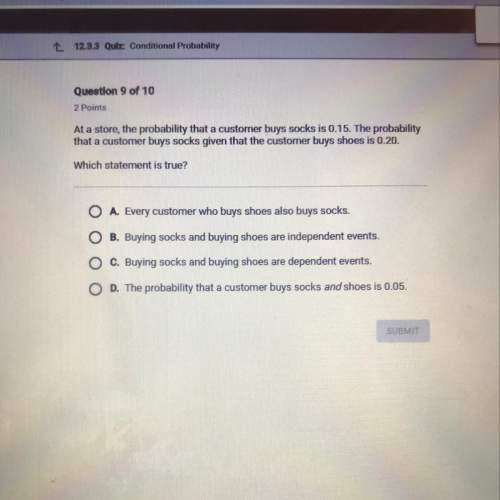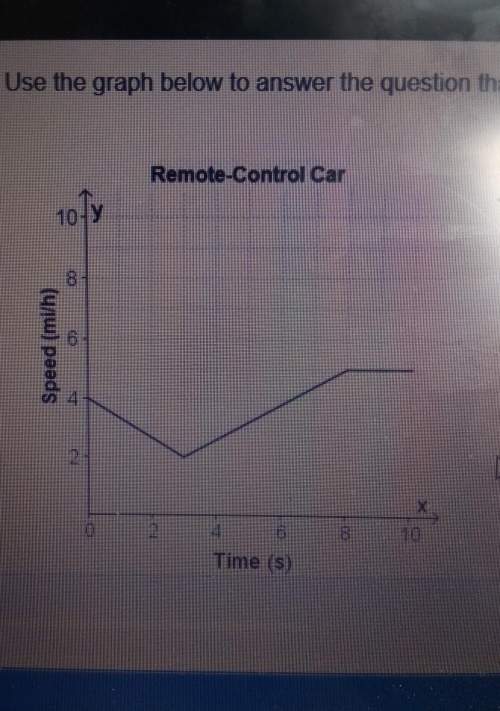
Mathematics, 03.04.2020 00:57 jasondesatnick
Let A, B, and C be arbitrary matrices for which the indicated sums and products are defined. Mark each statement True or False. Justify each answer. Complete parts (a) through (e) below.
a. If A and B are 3 * 3 matrices and B = [ b_1 b_2 b_3], then AB = [Ab_1 + Ab_2 + Ab_3]. Choose the correct answer below. A) The statement is false. The matrix [Ab_1 + Ab_2 + Ab_3] is the correct size matrix, but the plus signs should be minus signs.
B) The statement is false. The matrix [Ab_1 + Ab_2 + Ab_3] is a 3 x 1 matrix, and AB must be a 3 x 3 matrix. The plus signs should be spaces between the 3 columns.
C) The statement is true. By the definition of matrix multiplication, if A is an m x n matrix and B is an n x p matrix, then the resulting matrix AB is the sum of the columns of A using the weights from the corresponding columns of B.
D) The statement is true. By the definition of matrix multiplication, if A is an m x n matrix and B is an n x p matrix, then AB = [b_1 b_2... b_p] = [Ab_1 + Ab_2 +... + Ab_p].
b. The second row of AB is the second row of A multiplied on the right by B. Choose the correct answer below.
A) The statement is false. The second row of AB is the second row of A multiplied on the left by B.
B) The statement is true. Every row and column of AB is the corresponding row and column of A multiplied on the right by B.
C) The statement is false. Let column_i (A) denote the ith column of matrix A. Then column_i(AB) = column_i (A)B. The same is not true for the rows of AB.
D) The statement is true. Let row_i(A) denote the ith row of matrix A. Then row_i(AB) = row_i(A)B. Letting i = 2 verifies this statement.
c. (AB)C = (AC)B Choose the correct answer below.
A) The statement is false. The associative law of multiplication for matrices states that A(BC) = (AB)C.
B) The statement is false. The associative law of multiplication for matrices states that (AB)C = B(AC).
C) The statement is true. The associative law of multiplication for matrices states that (AB)C = (AC)B.
D) The statement is true. The associative law of multiplication for matrices states that (AB)C = B(AC).
d. (AB)^T = A^TB^T
A) The statement is true. The transpose of the product of two matrices is the product of the transposes of the individual matrices in the same order, or (AB)^T = A^TB^T.
B) The statement is true. Matrix multiplication is not communicative so the products must remain in the same order.
C) The statement is false. The transpose of the product of two matrices is the product of the transpose of the first matrix and the second matrix, or (AB)^T = A^TB.
D) The statement is false. The transpose of the product of two matrices is the product of the transposes of the individual matrices in reverse order, or (AB)^T = B^TA^T.
e. The transpose of a sum of matrices equals the sum of their transposes. Choose the correct answer below.
A) the statement is false. For matrices A and B whose sizes are appropriate to sum, (A+B)^T=A^T+B^T
B) The statement is true. This is generalized statements that follows from theorem (A+B)^T=A^T+B^T
C) The statement is true. This is generalized statements that follows from theorem (A+B)^T=A^T-B^T
D) the statement is false. For matrices A and B whose sizes are appropriate to sum, (A+B)^T=A^T-B^T

Answers: 3


Another question on Mathematics

Mathematics, 21.06.2019 14:20
What is the point-slope form of the equation for the line with a slope of -2 that passes through (1,4)?
Answers: 1

Mathematics, 21.06.2019 18:00
Which statement about the relative areas of δabc and δxyz is true? the area of δabc > the area of δxyz the area of δabc < the area of δxyz the area of δabc = the area of δxyz more information is needed to compare.
Answers: 2

Mathematics, 21.06.2019 22:30
Which answer goes into the box? (90° clockwise rotation, 90° counter clockwise rotation, translation, or glide reflection)
Answers: 2

Mathematics, 21.06.2019 23:00
If i purchase a product for $79.99 and two accessories for 9.99 and 7.00 how much will i owe after taxes applies 8.75%
Answers: 2
You know the right answer?
Let A, B, and C be arbitrary matrices for which the indicated sums and products are defined. Mark ea...
Questions


Mathematics, 04.05.2021 17:50




Mathematics, 04.05.2021 17:50



Advanced Placement (AP), 04.05.2021 17:50



Mathematics, 04.05.2021 17:50



Mathematics, 04.05.2021 17:50

Mathematics, 04.05.2021 17:50

Mathematics, 04.05.2021 17:50

Mathematics, 04.05.2021 17:50

Mathematics, 04.05.2021 17:50

Mathematics, 04.05.2021 17:50





